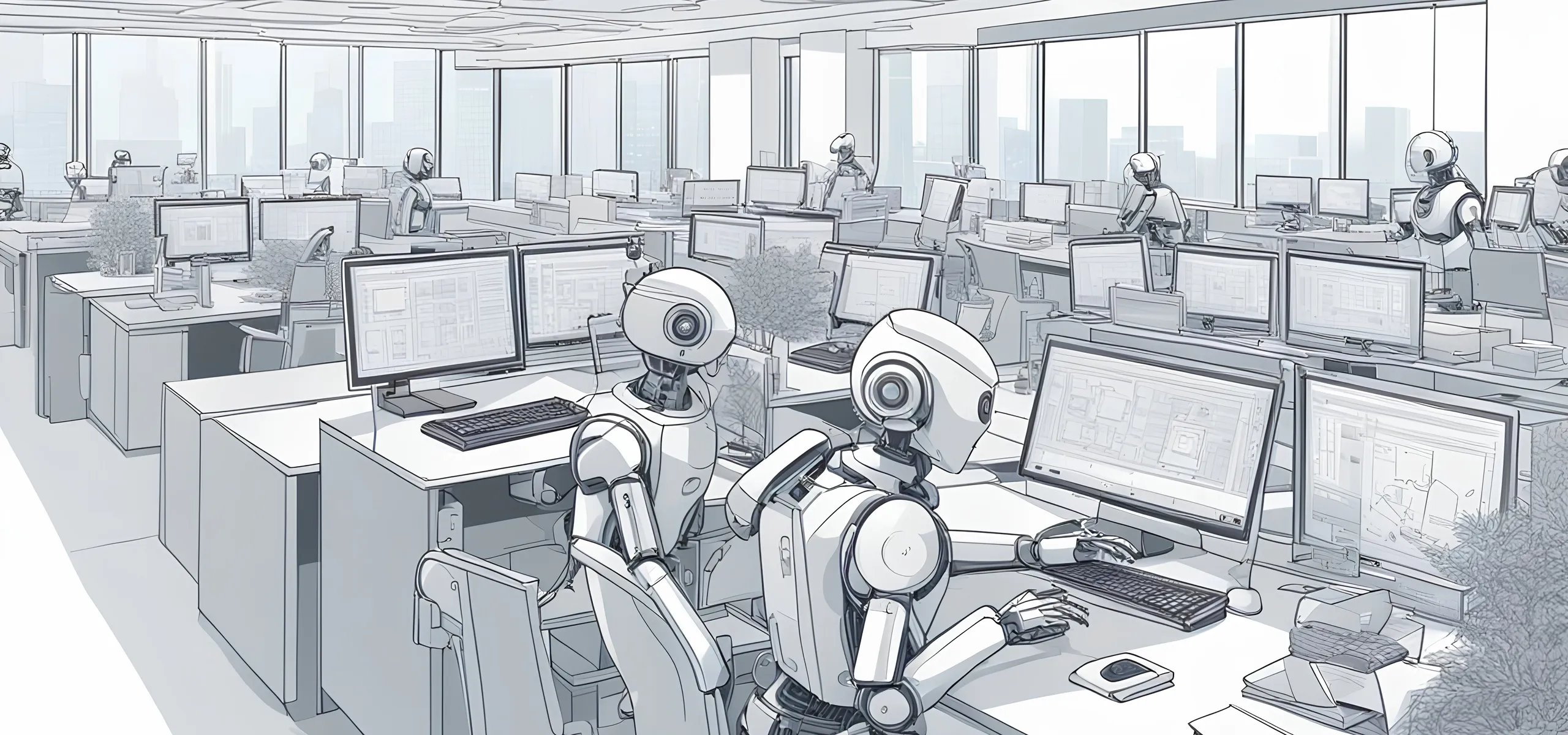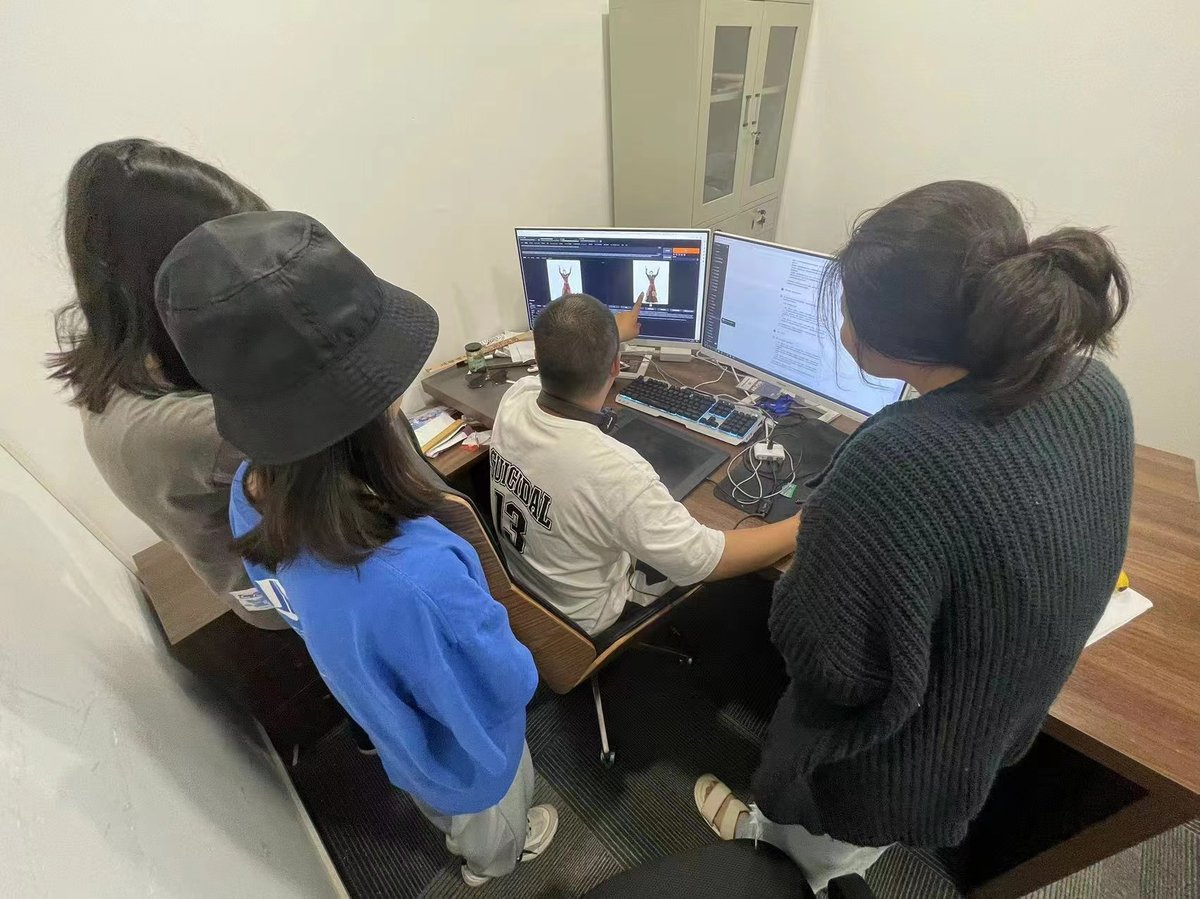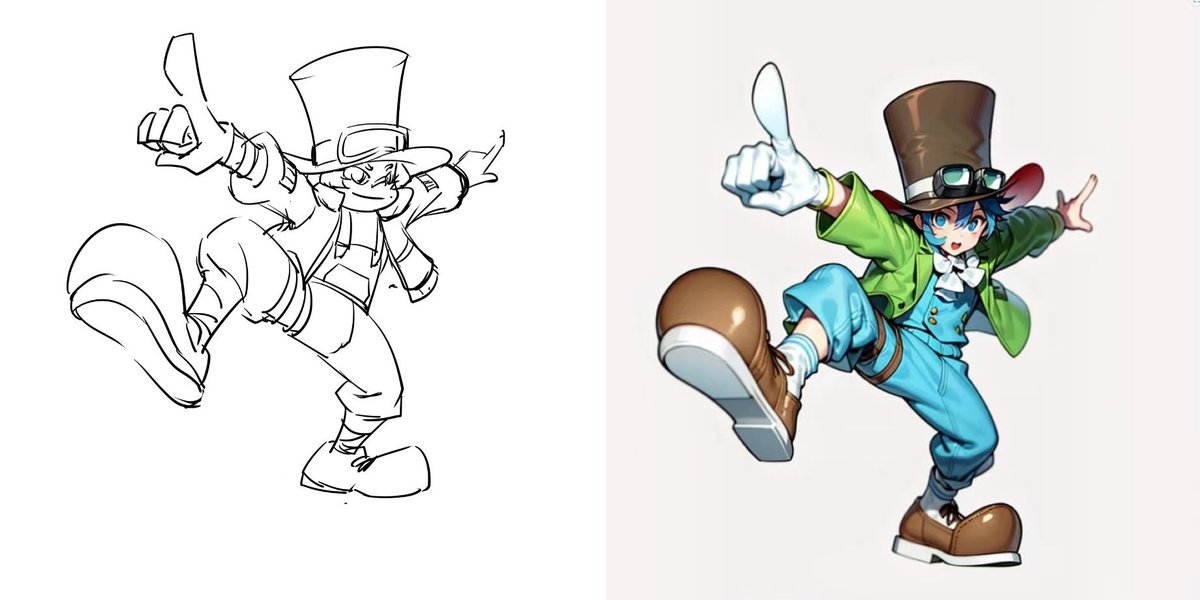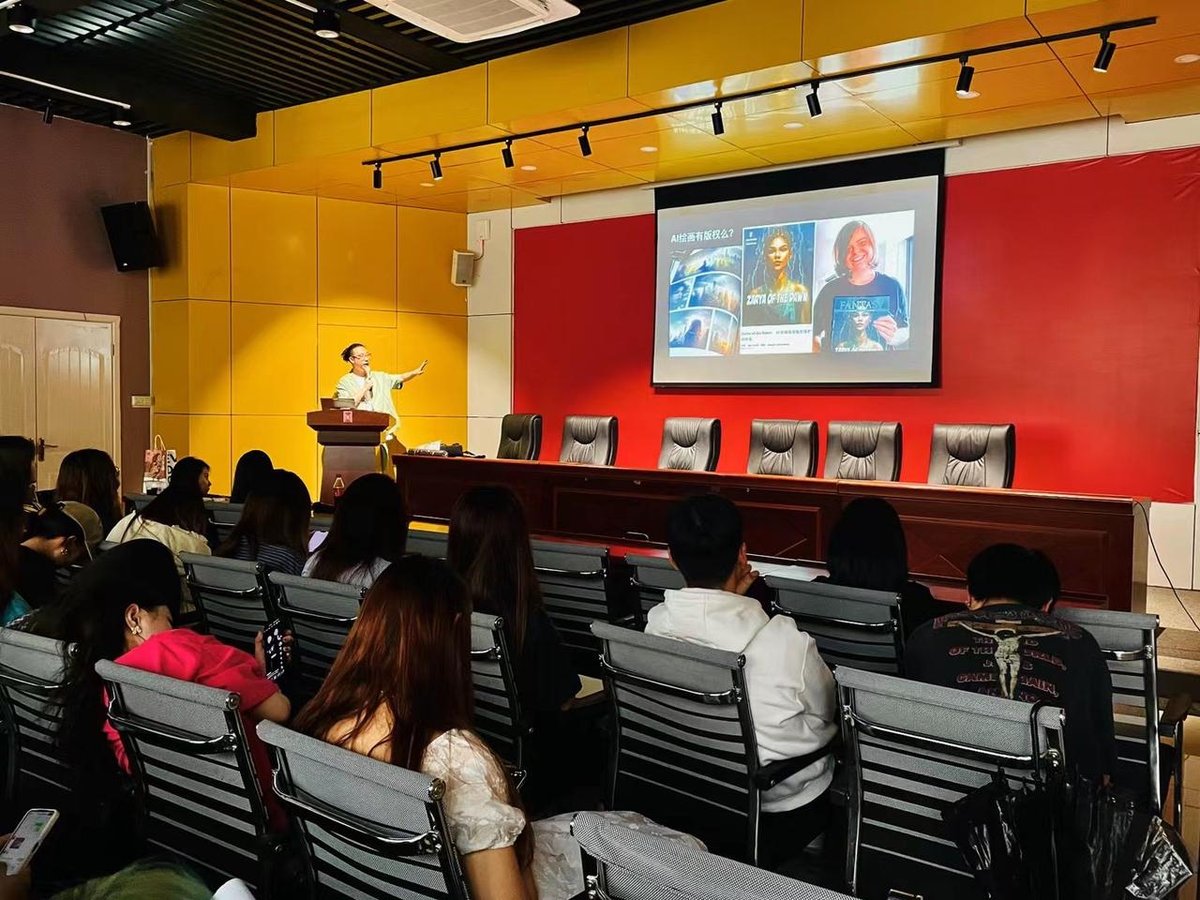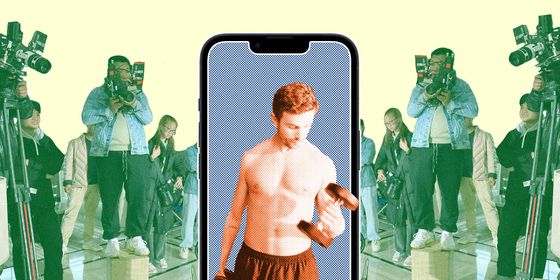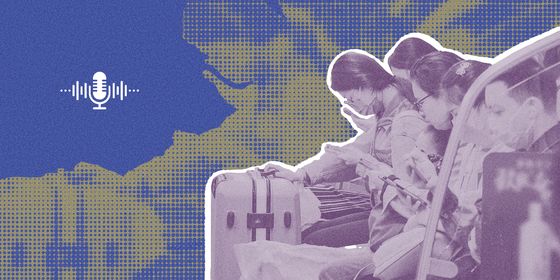From getting laid off to teaching AI courses, hear how employers and staff faced the onslaught of artificial intelligence in four companies
ChatGPT (Chat Generative Pre-Trained Transformer), the language model-based chatbot developed by OpenAI and launched on November 30, 2022, remains a red-hot issue in 2023. These days, various industries seek no-brainer solutions for their needs—voice, image, video, and much more—via AIGC, or Artificial Intelligence Generated Content.
We’re less than one year into this new technological wave. How has it already transformed our workplaces? To find out, we invited four narrators today to share how they cooperated with (and sometimes were replaced by) AI in different industries.
1
Layoffs that Pay Off
Dalong, founder of a dance-based gaming company
Story FM: These days, the internet is buzzing with news of industry layoffs brought forward by AI. Some will even claim that artificial intelligence is hunting the human workforce down. The truth is, business managers see in AI a chance to reduce costs and increase efficiency.
What’s truly at play behind these layoffs? And what goes through the mind of those in charge of such decisions?
Dalong: Hi, Zhu Bolong here—everyone knows me as Uncle Dalong, though. I’m the co-founder of Dalong, an internet technology company providing fitness and educational services, mostly through dance-based gaming. We moved all our dance education online as early as 2016, but 2020 was logically the year that brought a renewed emphasis on reaching family living rooms nationwide. Nowadays, my company employs around 20 people.
I majored in computer science myself, but I didn’t specialize in algorithms. I’ve always kept up with trends related to the internet, though. Then AI came around and I was one of many people giving ChatGPT a go while my business partner checked out some of those text-to-image models. We weren’t too familiar with any of this novelty, so while it all seemed fairly smart, for the first couple of weeks we couldn’t say the results matched our needs. Once we finally unlocked its huge, exciting potential, we also panicked some at the thought of our competitors wielding AI to their advantage and eventually wiping us out of the market. Last February, that fear compelled us to instruct our entire staff to prioritize learning the use of AI tools over their own tasks.
One day, I heard my business partner swearing, “Fuck, man!” I went by his office to check what’d happened and found him kneeling in front of his computer. His eyes were glued to the screen. “Have you checked this out? Much better than my own art.”
Now, this guy used to be a cartoonist and animation director, so he’s quite confident in his own work. There he was, though, ready to acknowledge that AI had “whipped his ass” and that there was “no way I can beat this thing,” so he may as well “give up entirely.” I immediately tried to counter his low spirits. “Okay, dude, so how about you set your mind on learning how to tweak this thing into perfection? Look, at the end of the day, we want this to work for us, right? A stable output means we save time on edits.”
And he really took up the challenge, putting in some six to eight hours of research daily for the next month and a half. He’d often clock out at 10 or 11 in the evening. Ultimately, new technology gets him giddy, so he ended up feeling as though he was just pairing his talent with the computer. Whenever I worked overtime myself, I was serenaded by his excitement at the computer yielding one image after another while he ate his dinner.
Initially, we weren’t familiar enough yet with maximizing the use of prompt words, plug-ins, and whatnot, so we were more than content with an efficiency increase of merely 50 percent. At least we were until a few additional months of research started getting us almost immediately the exact results we were looking for. That was actually quite scary.
However, it took a while to get our technical department on board. They argued that the wide availability of open-source code online was good enough to assist them with coding; they had no need for the all-too-normative ChatGPT. Again, once they mastered its use, they found out that their workload had been reduced by a whopping 30 percent.
Next came our operations department, where we introduced ChatGPT hoping it would take care of copy for our video and social media content. Same old song: the copy it generated was all flash, no substance, for as long as our operation team didn’t learn to communicate with the chatbot.
So here’s what I did. I guided the team through a highlights tour of China’s 5,000-year history of dance, and showed them some initial copy I’d produced following their usual method. Then, I gave the following command to ChatGPT, “Please pretend you’re a stand-up comedian and you want to summarize this content.”
Now we were talking. The key was getting them to understand ChatGPT as just another colleague, to assign it roles, a style, and even parameters like word count and paragraph count. They’ve never looked back.
That said, my business partner and I were eventually forced to consider some decisions concerning the future of our company. In the process, we successfully adjusted our usual range of AI-powered tools to assist with our day-to-day work and improved our efficiency.
One of our employees was a guy in charge of design for our social media channel. Though a certain amount of originality is needed, at the end of the day, his job was all about creating stuff like one-off images for posters and background SFX (special effects). Last February, it became apparent that this was all already feasible for AI with none of the copyright issues we’d experienced with less advanced software in the past.
Our employee in charge of operations realized that she no longer needed to rely on our designer for this kind of task. So I was due for a hard conversation with the guy, and I still remember vividly that he thought I’d called him to meet me in our stairwell to discuss regular work-related matters. “No, I’m sorry, but we no longer really have a need for your position. It’s no secret that we’ve all switched to AI these days, and your position is generating costs rather than bringing in any revenue. I must ask you to take on different duties, or else we’ll have to let you go.”
He said he’d give it some thought, and the next day he came to me and announced he was ready to try joining the operations team. However, his resolution was short-lived; he thought it was eventually pointless to invest time and effort in readapting. And so, just like that, he called it quits on the second day after our talk. All in all, it only took a week for my intentions to lay him off to crystallize into reality. This was certainly a first for me, and honestly, even nowadays it feels a bit cruel. But what could I do? Artificial intelligence did make him redundant.
Through the company grapevine, I learned that the next months were hard for him to get back on his feet. He’d just signed the lease on an apartment located right above our company, and that’s where he stayed for a bit, feeling defeated by the whole experience and not even trying to look for a new job. I felt awfully sorry, I really did. But there was nothing I could do. The money we saved by laying him off allowed us to purchase a subscription to Midjourney.
Story FM: Dalong closed nearly every job vacancy the company had originally planned to fill, with the careful exception of a UI designer. AIGC became a bargaining chip to negotiate wages down with prospective candidates.
Dalong: Again, it feels a bit callous for me to say this, but the one reason I hired a full-time UI designer was that I still needed someone to operate and supervise AI.
And it’s not like we struggled to gather resumes. Close to 150 people applied in a week, and the 20 or 30 we shortlisted were all too willing to lower their salary expectations. Of course, we owed this to AI, too.
I will say we were fairly honest during the interview stage. AI was their one rival, as well as far cheaper than any of them. If even an employee put in just 60 percent of the results, AI could elevate it to 100 percent. Either they could lower their salary expectations, or they could work together with AI to produce 200 percent of the results.
That being said, one of these candidates really surprised me. He had been working in Beijing on a salary of 15,000 yuan a month. When he couldn’t make it work, he decided to move to Chengdu on the wrong assumption that things were less competitive here. His initial expectation of a monthly 12,000 yuan was out of the question, but when I asked how big of a cut he could accept, I was taken aback. “8,000.”
I also told my business partner we’d immediately upgrade his computer with the best hardware available, including a 4090 graphic card—all to turn his device into our main productivity workhorse.
Unlike the resistance we encountered at the start of this journey, now everyone’s more than happy to turn to ChatGPT for pretty much everything. Our animation department is glued to the likes of Stable Diffusion and Midjourney. And we’ve noticed that, now that our staff has greatly economized their work process, they’ve got plenty of time to rest and loaf around.
So what’s next in our use of AI? Animation, for sure—and we’ve already started playing around with the available tools. It’s yet to meet commercial standards, but we’re confident that AI will be able to cover basic assignments within the next three to six months.
Then it’ll be time to tackle our audio content. Right now, we’ve got no choice but to purchase music copyright. Not only is it a costly investment, it also presents a series of risks whenever we fail to locate copyright owners. More often than not, we just task the risk and end up getting sued. Now, we’ve got reason to believe that AI will take care of our music needs within the next three months.
Mind you, we do respect creators’ copyright, but if someone’s quoting me 200,000 yuan for their tune, the hard truth is that it’s regrettably out of budget. AI will provide us with the chance to generate music based on any style we like. It’s going to turn the music copyright market upside down.
2
Artistry Matters
Ah Li, music producer
Story FM: Supply and demand go hand in hand. Dalong’s expectations for cheap, fast, and efficient work are the exact reason why our second guest Ah Li has been bleeding clients for a while now.
Ah Li: Hi, I’m Ah Li, 29 years old and living in Xi’an. For the last six or seven years I’ve been working as a music producer: soundtrack production, song customization, you name it.
My actual background is in coding, so I’m usually game for learning about new technologies. When I officially went back to work after the end of the pandemic in late 2022, the AI craze was in full swing. My main source of concern and fascination was these AI pop stars that could process a recorded human voice and come up with exact reproductions with minimal training.
I joined some online forums hoping to understand this whole phenomenon, but the files they handled in there gave me a headache even with my background in coding. I was willing to pay fellow users to help me figure stuff out, but they thought the fun in this stuff was in figuring it out yourself, not paying someone else to do it. Their response spurred me to give it another go.
It was a week of remedial research on coding. Once I was done, it was time to draw from my recording studio’s extensive archives to test the AI with my own voice first. I put it all through the cloud processor for 20 hours of memory training and left the computer on at bedtime.
The following day, my partner and I listened to the result I’d just downloaded. That was a nice little shock early in the morning. We’d listened to my exact voice. With my head buzzing, I sent the file to my mom, and then she blissfully texted back. “Ah, you still suck at singing!” My heart skipped a beat at the thought of my own mother being unable to distinguish an AI-generated voice from mine.
It was equal parts exciting and terrifying, and that was before I realized that the shadow of AI loomed all over the music industry.
Freelancers like me double as both the boss and the employee. I used to cooperate with a network of clients on various projects, but there’s been a significant hit in the stream of clients seeking my services for custom songs and soundtracks. To be frank, I’ve lost every one of the approximately dozen orders I used to get. The only explanation is that AI has become a reliable, unbeatably-priced source of content for my former clients. People know that they no longer need to pony up thousands of yuan for a music license. AI can get them whatever they want for a fraction of the price. That’s just how the market works, and at least now I knew who—or what—was robbing me of work.
It goes without saying that it took me a while to get acquainted with AI, and it was then that one of my customers came up with feedback on some content I’d just delivered. “Just who wrote this? Looks like it was made by a newbie.” A week of AI-powered tweaks later, he was much more receptive. “Now this is the good stuff.”
Again, nobody could tell the difference. It was honestly scary yet fascinating to witness. The client’s pupils quivered when I disclosed the origin of that second piece of music. “You made this with AI?” Once I added that it took a grand total of 30 seconds, he was too stunned for words.
Efficiency is what the market wants, and humankind simply does not hold a candle to AI on that front. My client’s inability to tell apart my own content from AI only went to show that the latter was already at commercial standards.
Once I showed the client this piece of music, he stopped coming to me. I reached out to him, and he was honest in telling me that he’d found someone willing to work with AI to deliver the efficient, high-volume product he sought versus the higher-quality stuff I promised. So be it, I told myself.
Weavers marching into factories to smash the steam engines that threatened their livelihoods did not stop the Industrial Revolution, and now we’re looking at the exact same scenario with the impact of AI in our industries. Honestly, I understand that mass customization benefits ordinary consumers due to AI lowering unit prices. However, many of us workers resent it, that’s just a hard truth.
Truthfully, it’s not all doom and gloom. In the past, a client being unhappy with whatever demo meant overturning everything and rewriting the piece from scratch. Nowadays, I can rely on AI to generate demos that will generally strike the right chord in terms of style and content. I appreciate this tool because it can cut down on communication issues and create custom content with more efficiency and productivity.
Though I’ve managed to stay afloat, I know some juniors in this field can’t say the same. This has forced us to up our game. Our only chance is to put out higher-quality content that highlights our unique artistry. The standard commercial stuff that we used to rely on to pay the bills has already been mastered by AI. It operates on the very premise of learning your style, your method, and even your way of thinking, in order to replicate it all seamlessly.
3
“I’m Constantly Wiping AI’s Bum”
Xiao A, concept artist
Story FM: Faced with the emergence of AI in his own industry, Ah Li had to reassess his ultimate mission and customer base. For him, the public still has the power to choose aesthetic quality. But is it possible for AI to reshape our aesthetic standards?
Our third guest narrator today is Xiao A, a newcomer to the gaming art industry. At the time of recording this podcast episode, she’d only been at her current company for one year, during which she had witnessed many of her colleagues switching—voluntarily or not—from their positions as concept artists to mere “fixer uppers” of AI-generated work.
Xiao A: My name’s Xiao A. I’m 24, and I work at this Xiamen-based art agency that takes on creative work outsourced by gaming companies. It employs over 50 people at the art department. As a concept artist, I’m in charge of designing character, graphics, and SFX.
I’ve been passionate about art since my childhood, but art school just wasn’t in the cards for me. My parents fully bought into the usual small-town prejudice that art is just the last option for students that’ve failed to get into any other major. I tried to have it my way, but they just wouldn’t budge, and eventually I had to settle for engineering, except I didn’t feel my degree ever taught me anything of substance or that was even enjoyable. I was still hell-bent on doing what I truly liked. Shortly after I learned about the role of concept artists in the gaming industry, I made up my mind to join the industry and took training courses for a year. Two years later, I joined my current company.
When the buzz around AI started earlier this year, I was already familiar with it. I started my job in March 2022, and back then you could already see lots of AI-generated art on the internet, but they looked really uncanny—a hand with 10 fingers, for example. But now it’s developing at lightning speed. The issues have mostly been fixed, and the average person can’t tell AI from human-generated art anymore.
Earlier this year, the project my colleagues and I were working on suddenly needed more art than was possible for us to produce, so eventually the company recruited an additional staff member. This guy’s job was to refine a pre-approved sketch into a finished piece, and when I gave him the raw material he asked me, “How long does it usually take you to refine something like this?
“Um, about seven days,” I said.
“Cool,” he replied.
His response left me a bit puzzled. Did he think a full week was too short?
I got to see him at work with AI. Once he was done, he asked me whether the results were good enough, and I randomly picked a few places to correct in order to avoid giving him a hard time. “Just submit it to our supervisor once you’re done with those changes.”
That’s what he did, and our supervisor did not mince any words—the results were substandard. The piece itself was not that tricky, but the character’s clothing was all in a single layer. AI worked just fine for that initial stage, but finer details and accessories were beyond the software. Once he was dismissed by our supervisor, my new colleague came to see me. “So what do I do now?”
“Just follow the guidelines and reference pictures I gave you, it should be fine,” I said.
“What? You want me to just do it by hand?”
“I mean, yeah.”
“So what about AI?” he asked in shock. “Can’t I make it work with AI?”
I rolled my eyes. He really couldn’t be bothered to lift a finger.
We currently use Stable Diffusion, and I’m also learning AI language to a certain extent to maximize its use. But I’m never really satisfied with the results. They’re just mediocre, and don’t get me started on the range of human emotions that AI-generated characters simply cannot achieve. There’s one thing you can reliably expect from AI’s work, though—have you noticed that strange red cast on characters’ faces? Bet you it comes from overlapping too many pictures from actual human artists.
Gamers aren’t happy to find traces of AI, so any content we generate nowadays must go through a pretty intensive round of cosmetic edits. Now please tell me again that AI is here to support our work as artists. Give me a break. We are the assistants that constantly wipe the AI’s metaphorical bum.
What’s worse, our boss has also fallen for AI—hook, line and sinker. If it’s AI-generated, it’s good, if you made it? He’ll take his complaints about our alleged mediocrity to our actual team leader, a relatively senior concept artist who’s been in the industry for almost eight years. I’m telling you, this bigwig once popped behind the guy when he was busy editing AI content, and what did he say? “I think AI does it better…”
There’s no way our team leader wasn’t incredibly pissed, but he didn’t dare to say a thing. You know, our boss fancies himself above the work of plopping his ass down to actually create an art himself. Instead, he imparts his pearls of wisdom from his high horse.
Here, my colleagues like to point out that we should also be looking at having AI replace quite a few people in leadership positions. You see, at the end of the day, AI isn’t streamlining our process, not with all those edits. Honestly, it all feels like an excuse for our boss to claim we’re too slow and lay us off.
Due to the layoffs, many of my colleagues were logging overtime until half-past 10 in the evening for over 20 consecutive days. Just imagine how depressed and depleted they felt. Our team leader was no exception, but he did have a warning. “Want to quit? Make sure you’ve already got the next job lined up. In our current work environment, it’s not that easy to just land a job anymore.”
I follow many big shots from my industry on social media, who assist newcomers and even fairly experienced artists by forwarding their portfolios online. Except doing this doesn’t exactly make me hold any hope that I’ll be able to switch companies this year. My former colleagues who’ve quit certainly haven’t so far, and they were far more talented than me. Check the hashtag #failedthetest (没过的测试) on social media and you’ll meet plenty of superb artists who can’t land a job.
So it’s no wonder I’m so despondent. I scroll my days away scouring the market, and sometimes find myself sleepless until 2 or 3 in the morning. I feel so uncertain about my future. What if I end up having to leave the industry altogether? Sometimes I kind of wish the company would just fire me, so that I could at least coast on the settlement money for a while.
Still, I’ve yet to lay down my brush. Once I clock out from work, I just draw whatever I like, just like I did before this whole AI shebang. I still expect to gain something from honing my skills.
4
Cashing In on AI, One Training Course at a Time
Hu Bo, AIGC lecturer
Story FM: Still, some people in the industry have indeed profited from this new technology. Our fourth and final narrator, Hu Bo, is one of them. Prior to the emergence of AI, he and his team had already amassed nearly a decade of experience in workplace training for UI visual design and web design. These days, they go by the brand label of “China’s first AIGC lecturers” on social media.
Hu Bo: Hi everyone. My name is Hu Bo and I teach AIGC-related courses at a Beijing training institute as part of a team of five people.
The news of AI rocking the art and design world had us weighing the implications for the whole industry. From the beginning, we specialized in training project managers and designers to improve their employability. That’s why we chose to immediately dissect text-to-image models such as Midjourney and Stable Diffusion. Our original intention was to supplement our existing courses, but eventually we singled out AI as a brand new course module of its own.
We came up with our basic content packages over the course of two intense all-nighters where we wrote lesson plans before we tackled all the shooting, recording, and editing. Time was of the essence if we wanted to capitalize on this chance before the market got saturated.
We started by answering our students’ questions on Douyin, where we also hosted live broadcast course sessions. Our course fees were initially about 300 yuan, which is relatively cheap. On our release day, we announced a pre-sale promotion and got over 80 orders in an hour and a half.
Story FM: In the following month, Hu Bo expanded his first eight lectures on Midjourney to perfect the contents of a new course. Eventually, the company came up with a package priced at 1,099 yuan with over 20 video lessons and access to a library of resources on AI operations, offered via group chats on social media platforms like Xiaohongshu and Douyin.
In the past few months, Hu Bo and his team have seen a steady flow of revenue in the millions from several successive cohorts of students, who were the first people to ever pay for training on AIGC.
Hu Bo: It’s been three months since we started our class. We’ve taught four batches of nearly 500 students each. I would say 80 to 90 percent of them come from enterprises where upper management is forcing the staff to master AIGC tools. I’ve had senior designers for Meituan and Tencent WeBank come to me pleading for a chat. “The pressure for AIGC is already part of our performance evaluation, and our end-of-year bonus relies on us mastering AI.”
They certainly weren’t isolated cases. For the first couple of months, everyone struggled under significant pressure to integrate AI into their work. Our courses are meant to provide students with the right tools to engage with their companies, and so we’ve been constantly tweaking the details where we address how to combine Midjourney with other AI tools. It’s all tailored to current industry demands.
Story FM: These days, many companies are quick to add AIGC to their list of prerequisite skills for job openings. Where do these qualified candidates come from, though?
Prospective and fresh college graduates sometimes find that their education doesn’t adapt fast enough to the times. For them, Hu Bo fills the gaps. They’re being exposed to his courses from the comfort of their own campuses—many colleges and universities have invited him to impart lectures on AIGC.
Hu Bo: Take any recruitment ad from tech companies online. Fluency in AI tools such as Midjourney is no longer a plus or even a highly desirable skill, but a deal-breaker. Such is the case even for major companies like DiDi, and I know from one of my students that they have long ditched traditional designers, opting instead for a few specific AIGC-based designer positions where your tasks include feeding the AI keyword descriptions. What we do is to research the job description, figure out the company’s needs, and train you to meet them.
University teachers understand the market’s current demand for trained professionals to cover these new positions, and the pressure on their students to adapt. However, the issue remains that some of these students may have only vaguely heard of ChatGPT and Midjourney, without really knowing much about either.
I carried out a small experiment with students at Sichuan University of Technology. When I asked those who’d used Midjourney to raise their hands, I only got one student in an audience of over 100 people. Well, that student was already standing head and shoulders above their peers in the competition for internships and jobs.
Conveying the enthusiasm and zeal for this stuff to my students takes a lot of prep. There’s much for me to watch and study so that I can keep them updated about the latest developments in the industry. In Japan, Osaka University researchers have turned to AI tools such as Stable Diffusion to analyze the brain scans of test subjects that were shown up to 10,000 images while inside an MRI machine. Stable Diffusion was thus able to generate high-fidelity images that were virtually identical to the originals. I’m much like these researchers, in that I come to learn about these things as a result of my own efforts to stay updated on the development of AI, but when I present these examples to my students, they’re fascinated, as they didn’t know AI could achieve so much.
Story FM: One month after we recorded this episode of the podcast [Editor’s note: it was originally published on June 24], some of our narrators gave us updates on their lives.
An employee from the operations team at Dalong gave notice, but Dalong didn’t try to change their mind. They just gave instructions to ChatGPT, and a week later, an employee from the finance department was able to take over the position.
Xiao A resigned from the gaming company, which made her work a record amount of overtime in her last month. She wants to take a break and focus on building her portfolio.
In this new environment, everyone’s shifting positions. And maybe someday, many years from now, someone will accidentally remember the first question they attempted to submit to ChatGPT, much like we reminisce on the first time we turned on a computer. Technology has no direction. The real start of the journey isn’t when you press the start button, but when you figure out the direction you want to go.
Podcast episode produced by Yin Xuan (印璇)
This story was translated and edited by humans, though AI generated the cover image and helped come up with ideas for the headline.
___
This story is published as part of TWOC’s collaboration with Story FM, a renowned storytelling podcast in China. It has been translated from Chinese by TWOC and edited for clarity. The original can be listened to on Story FM’s channel on Himalaya and Apple Podcasts (in Chinese only).





